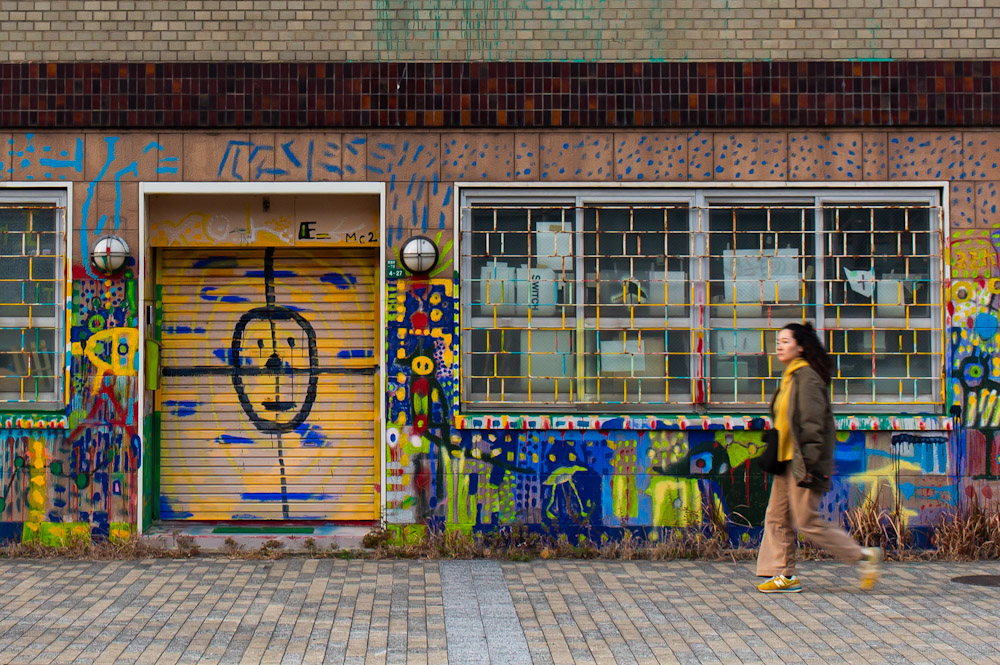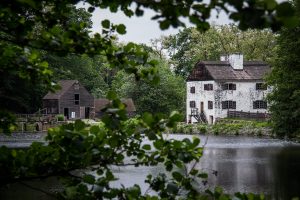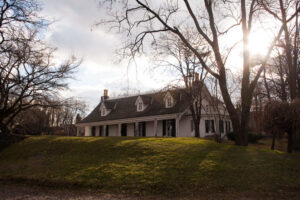On the northern edge of Kyushu lies Mojiko—an international trade port that opened in 1889. Today, the area is preserved as a historical district, offering visitors the chance to step back in time and experience a different era of Japan. If you’re heading to Fukuoka, this charming retro town makes a great pit stop on your travels. Here’s a quick guide.
Mojiko began as a small village of fisherman and saltmakers. In 1889, it was designated a special trading port, mainly for coal, and it steadily grew from there. By 1896, it had become Japan’s leading exporter of coal, and just three years later, a fully open port. It’s accessible from Shimonoseki in Yamaguchi and Kokura in Kitakyushu. Both are just a short train ride away from the retro town.
Mojiko Station opened in 1914 and became the first railway station in Japan to be designated an Important Cultural Property. It was restored to its Taisho-era appearance through a 6-year process that began in 2013, reopening in 2019.
The two-story symmetrical structure was built in the Neo-Renaissance style. Notable features include the original “Zero Mile Sign,” which marks the start of the Kyushu Railway line, and a water tap affectionately known as “kaeri-mizu,” which once quenched the thirst of returning soldiers and travelers.
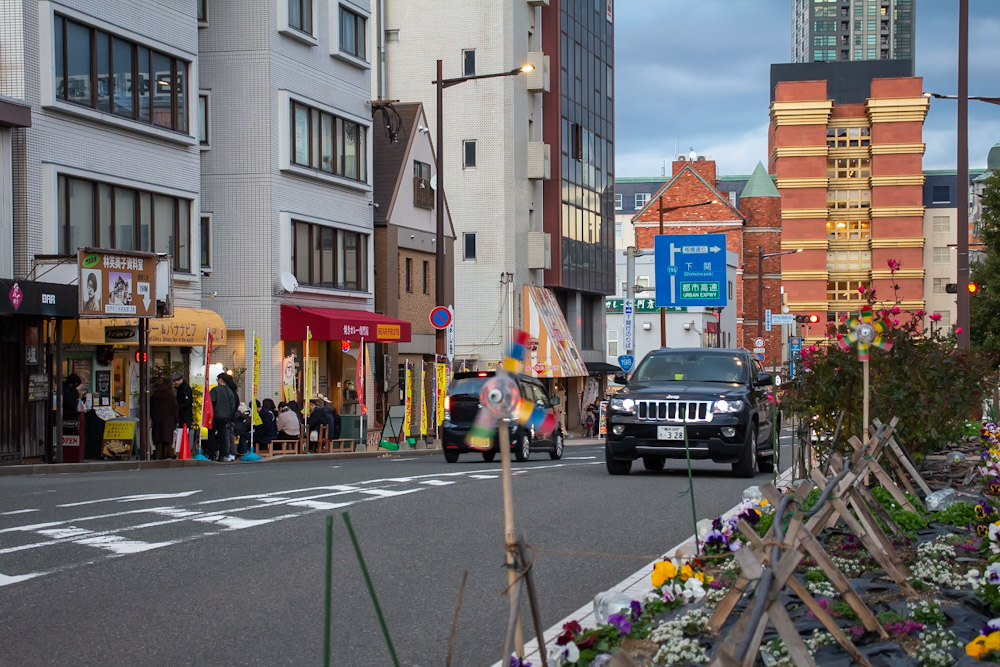
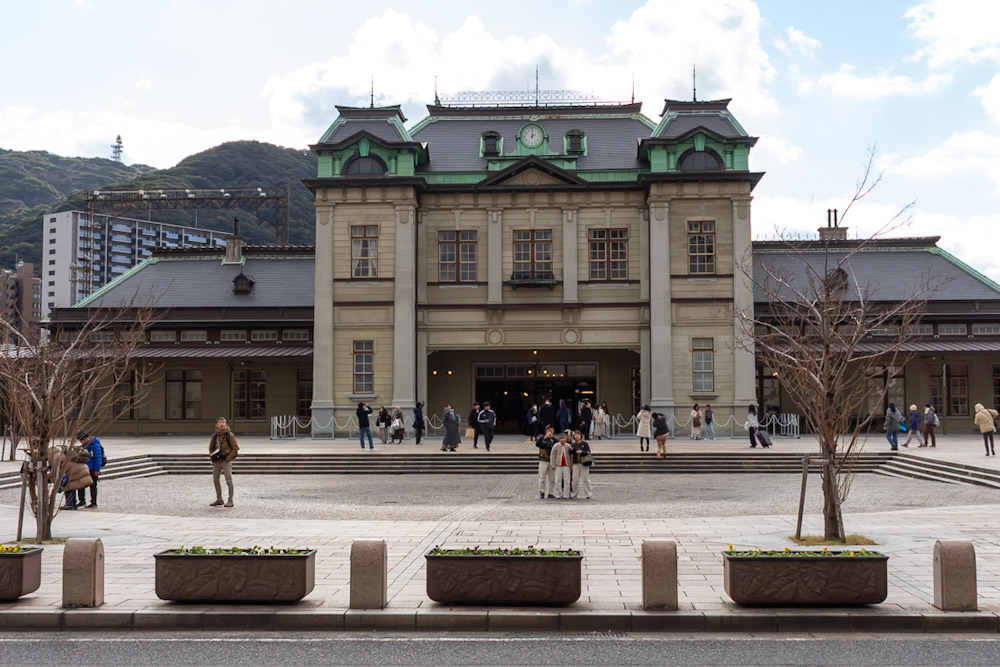
To the left of the station, about an 8-min walk away, is the Dalian Line Shipping Terminal. This was once the final stop for ships in Japan on their way to Dalian Port in China. After setting sail from Osaka, they would load cargo in Kobe, and then stop at Moji to pick up coal and passengers.
At that time, the building was just a few meters from the water. It had waiting rooms, administrative offices, inspection and storage areas, and a telegraph office. Today, it houses exhibition spaces and the Matsunaga Bunko Film Museum.
On the first floor, a permanent exhibition showcases models of Japanese ships that once passed through Moji, posters and sailing memorabilia from the time, and cities that have friendships and sister-city agreements with Kitakyushu. At the time I visited, a special exhibition of Tatsuya Tanaka’s miniature works was on display.
There’s also an old multiplane camera to check out, which was used in several animated classics, like My Neighbor Totoro (1988) and Pokemon the Movie (2000). It’s part of the Matsunaga Bunko Film Museum, whose namesake was a Moji-born collector of films, posters, and filmmaking equipment. He donated the bulk of the collection, which features over 60,000 pieces.
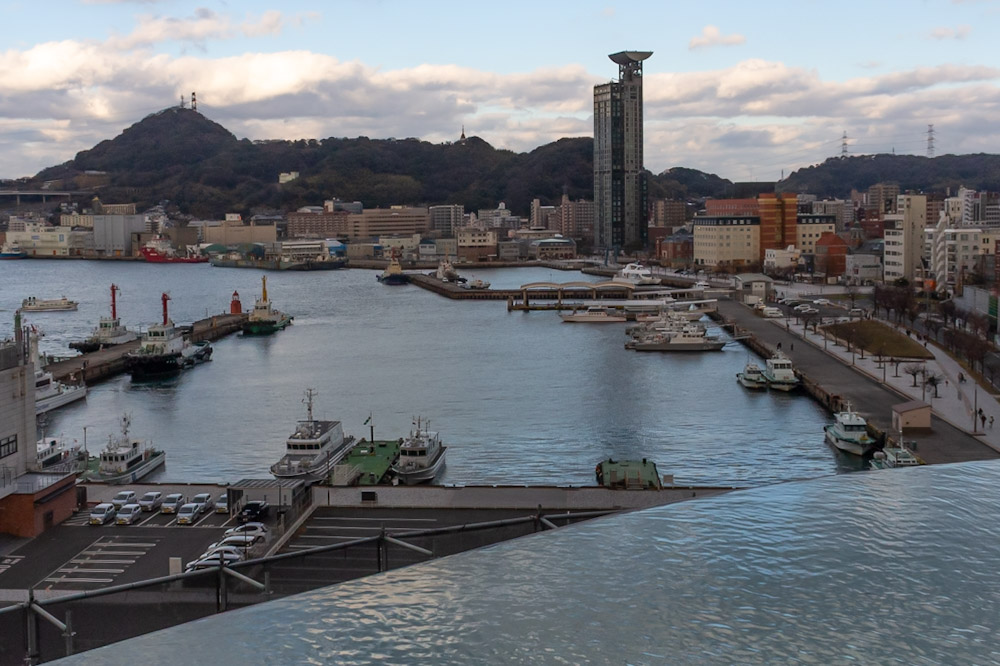
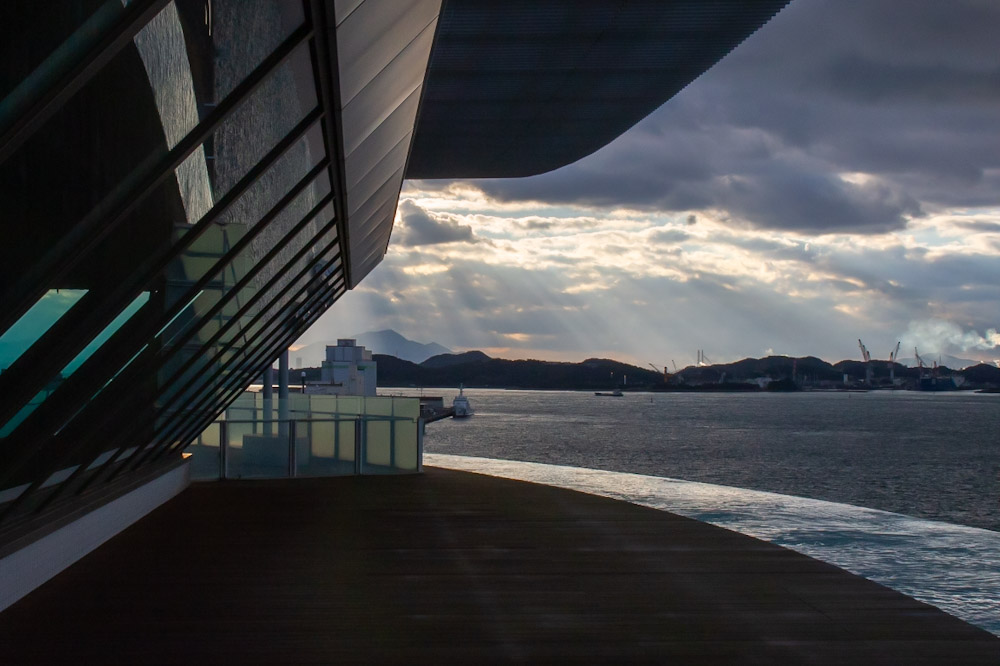
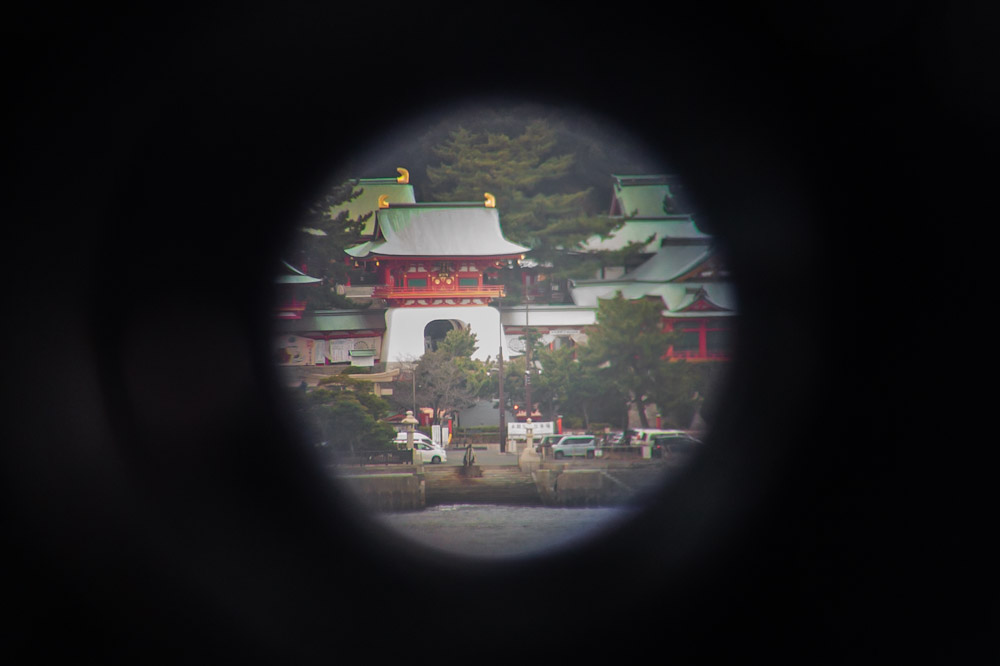
Across the street from the Dalian Line Shipping Terminal is the Kanmon Strait Museum. This multi-level complex introduces the history and natural wonders of the stretch of water that separates Honshu and Kyushu. The Strait Retro Street, for example, recreates the townscape of Moji Port in its heyday, complete with real streetcars, a ceiling that changes from day to night, and life-size statues of banana vendors.
Banana vendors, you ask? Well, in the early 1900s, a huge number of bananas landed at Moji Port from Taiwan, a big producer of the tasty yellow fruit. In order to sell them off before they ripened, vendors had to get creative, and their unique sales pitches eventually evolved into a traditional performance art that is still celebrated today.
You can learn all about it at the Mojiko Banana Historical Archives display on the second floor. On the fourth floor of the museum is an atrium and giant 3D theater with more displays on the history and culture of the area. And on the 5th floor, there’s an observation deck with panoramic views of the Kanmon Strait.
The museum also includes an indoor cafe with beautiful views of the port and a children’s play area. In front of the building is Moji Port Wharf #1, where you can see boats and ships up close and enjoy more views of the Strait.
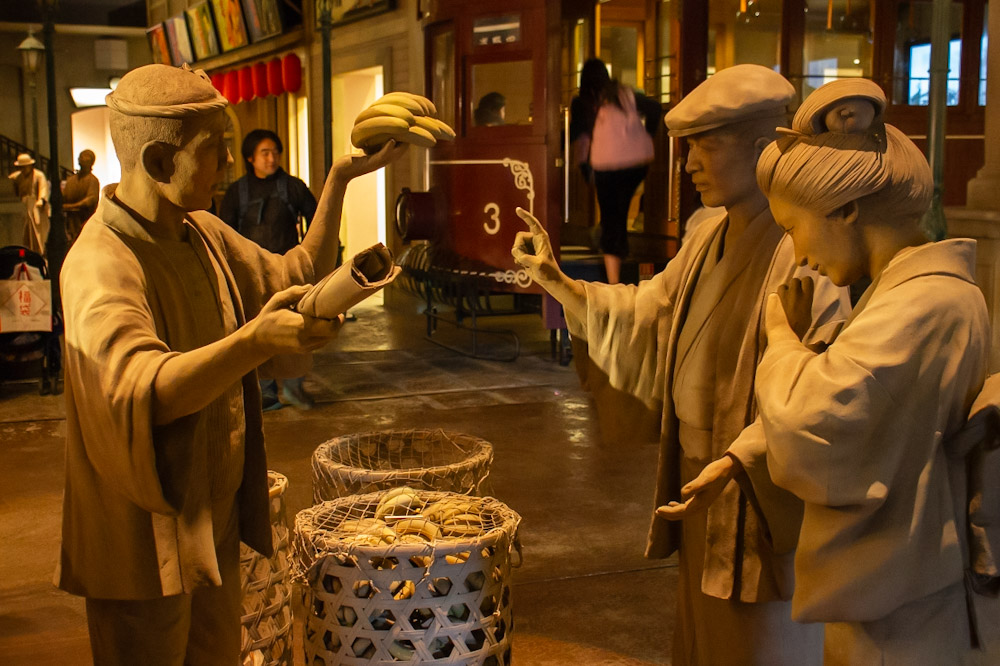
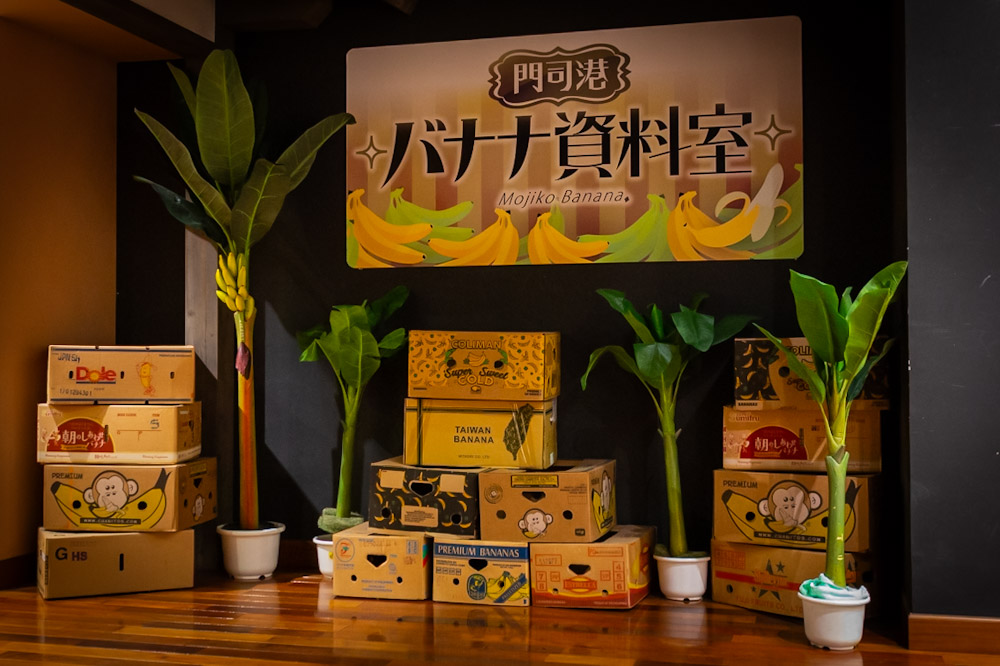
Walk back towards the station and you’ll soon come across the Former Osaka Shosen Building. This old shipping office was built in 1917 and featured a waiting room, customs office, and warehouse. The orange-tiled building was taken over as a city property in 1991 and restored as a center for art and culture. Today, it houses the Mojiko Design House, which exhibits works by local artists, a cafe serving grilled banana honey toast, and a rental hall.
Inside, you’ll also find the Seizo Watase Gallery, a small museum showcasing the works of the manga artist and illustrator. Watase, who’s from Kitakyushu, is best known for his romance manga, Heart Cocktail. Huge in the ‘80s, it has sold more than 5 million copies, and various prints and memorabilia associated with the series are on display. There’s also a gift shop where you can browse postcards, calendars, and other souvenirs.
By this point, you’ve probably worked up a decent appetite. Luckily, there’s plenty of restaurants and cafes nearby. Many of them serve Mojiko Yaki curry, which is a local speciality. If you’d like to try the best burger in Kitakyushu, though, I’d head over to Hungry’s Burger Lounge. This small establishment boasts delicious fare, good music, and top-form Americana decor. There’s usually a line, but the wait is worth it.
After lunch, why not take a stroll across the Blue Wing Moji? It’s the largest pedestrian drawbridge in Japan and is said to be lucky for couples who cross it. It also offers beautiful views of the Kanmon Strait and Kanmon Bridge. And just on the other side, you’ll find the Mojiko sign, which is perfect for snapping pictures.
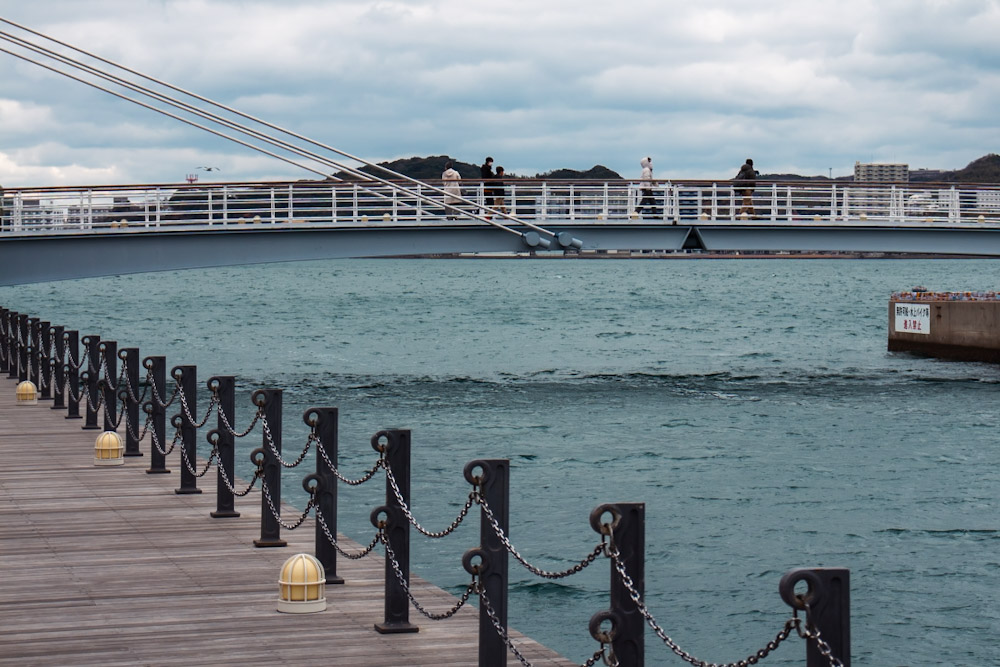
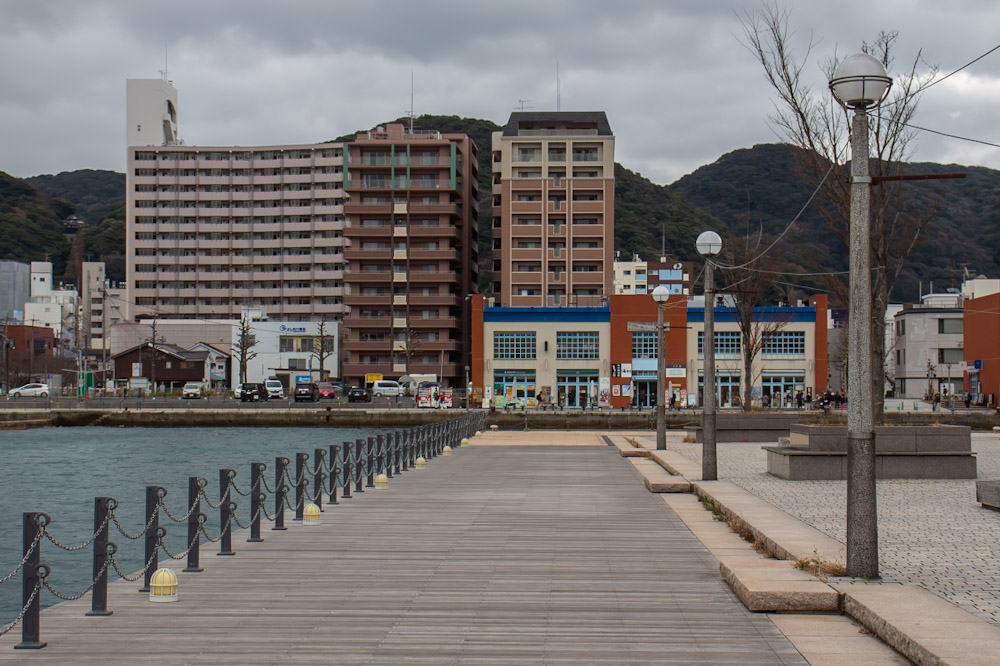
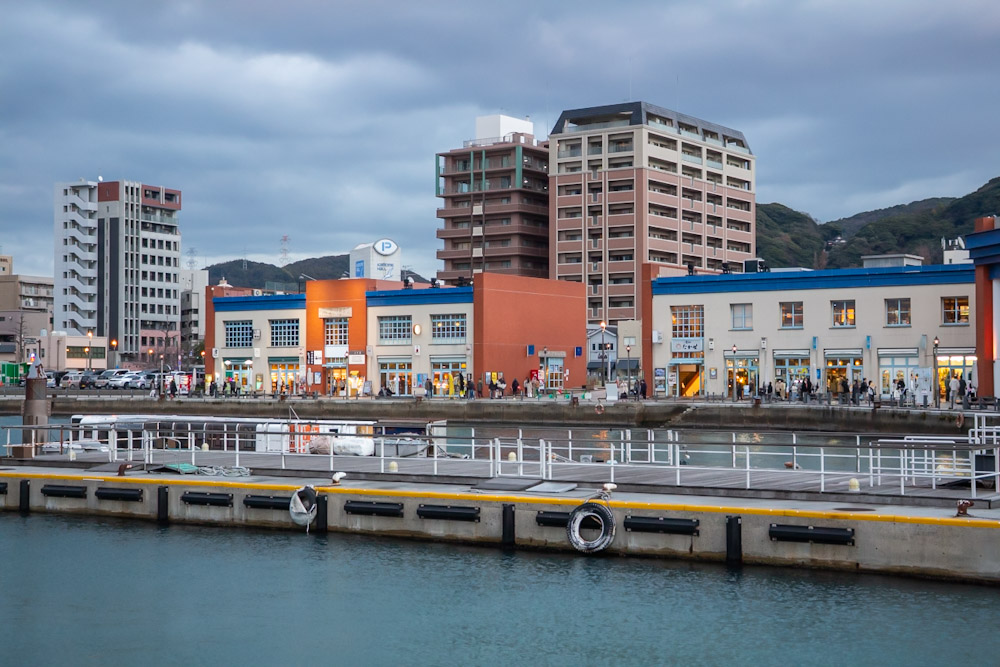
To the right of the sign, you’ll see the Former Moji Customs House. The red brick building is a 1912 reconstruction of the original, which burned down in 1910. It’s now a rest space, complete with a fruit café and small art gallery. It also has a really interesting exhibit on modern customs policies and smuggling. On the third floor, there’s a small observation space where you can see views of the waterfront and parts of the historic district.
Be sure to also check out Minato House across the way. Look for the yellow banana-topped Japan Post box marking the entrance. Inside is a fresh seafood market, souvenir shop, and tourism information center.
Next door is the Mojiko Retro Observation Gallery, which offers panoramic views of Mojiko, the Kanmon Strait, and Shimonoseki, and in front of that, the Dalian Friendship Memorial Hall. The latter is a near-replica of the Chinese Eastern Railway Steamship Office that the Russian Empire built in Dalian in 1902.
The Memorial Hall was built to commemorate the 15th anniversary of the friendship-city agreement signed between Dalian and Moji. It boasts a Chinese restaurant, a display of artworks and materials connected to Dalian, and a meeting space for local development groups.
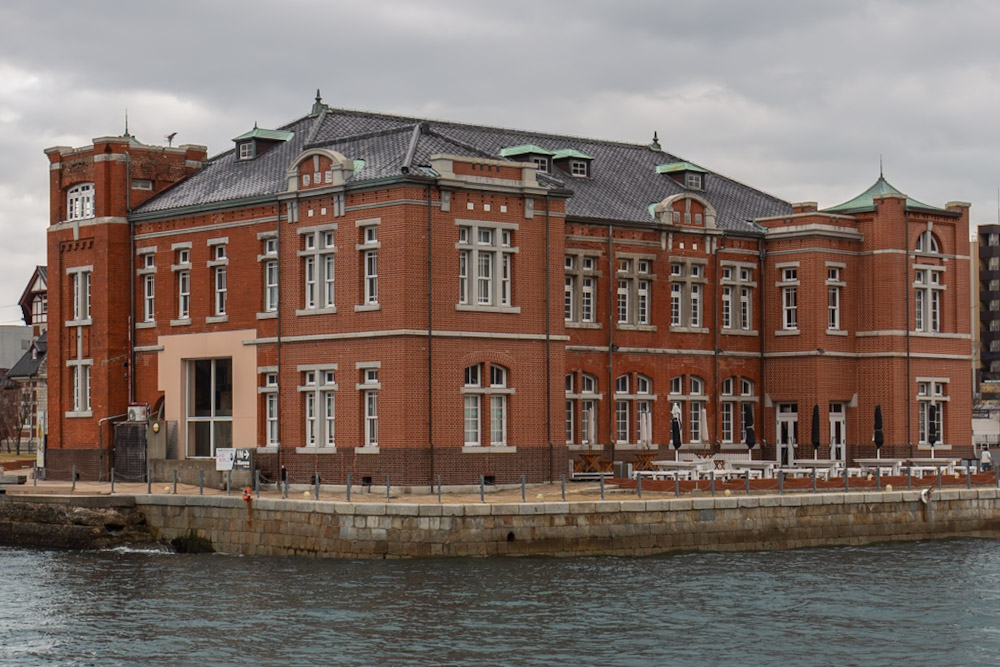
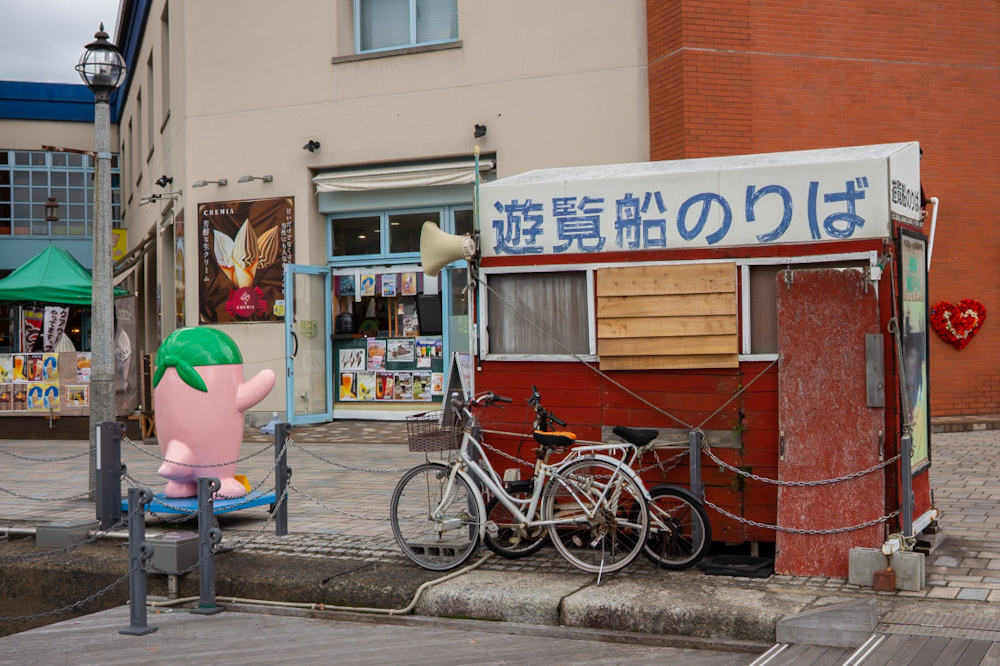
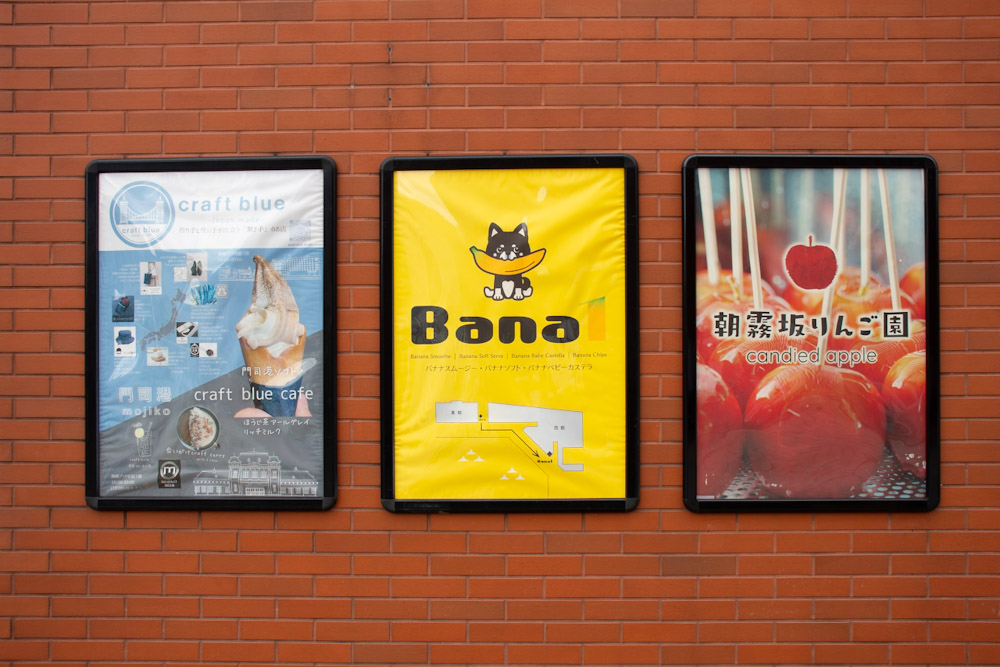
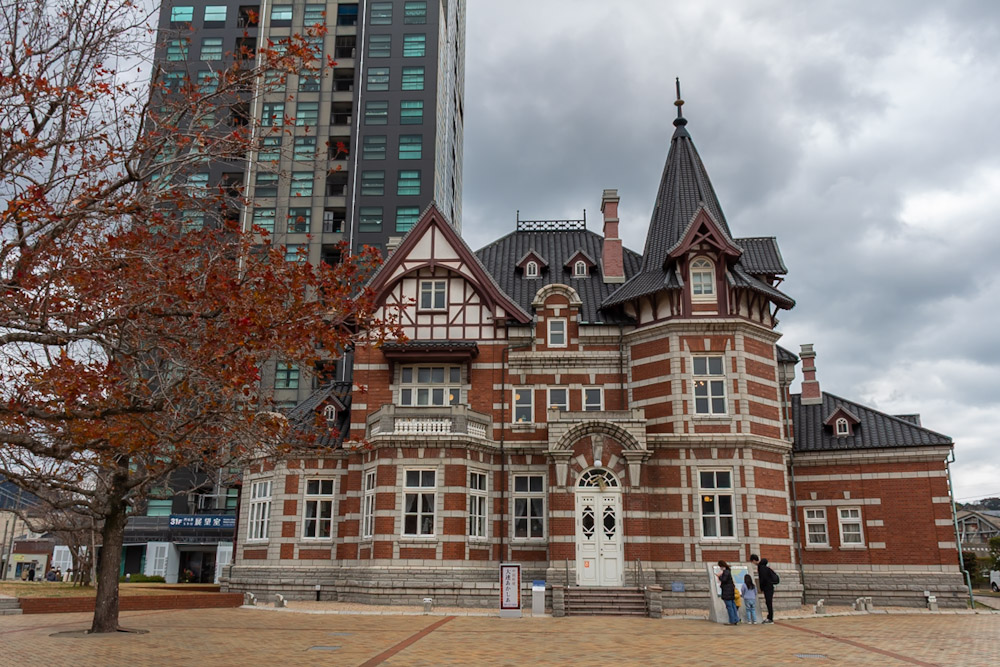
Behind these two buildings is the Idemitsu Museum of Art. On the way, you can see the one-man operated Tram Model 100, which used to run through Kitakyushu City. The museum specializes in Japanese calligraphy, paintings, and ceramics. It also puts on special exhibitions throughout the year.
A couple of blocks away is the Moji Telecommunication Museum, which is housed in the former NTT Moji Sales Office building. It’s free to enter and has some pretty cool exhibits on old telephones and exchange equipment.
Head back down towards the waterfront area and you’ll come to Kaikyo Plaza. This small shopping center is filled with eateries and souvenir shops where you can browse local handicrafts and artisanal goods.
There’s also a pair of Bananaman Statues, which are a beloved photo spot, and the Mojiko Harbour Deck, from which you can take a cruise of the Kanmon Strait.
On your way back to the station, be sure to check out the Former Moji Mitsui Club. It was originally built for employees and guests of the trading company Mitsui & Co. and once hosted Albert Einstein during his tour of Japan. Today, it functions as a restaurant and museum, which showcases the suite he and his wife stayed in along with personal effects, like photos and letters.
There’s plenty to see and do in Mojiko, making it great for a half-day, full-day, or weekend trip. The retro town also hosts different festivals and events throughout the year, so be sure to check out the website for details. For a guide to all the places mentioned in the post, see the map below.
This article is also featured on GPSmyCity. To download this article for offline reading or create a self-guided walking tour to visit the attractions highlighted, go to Walking Tours and Articles in Kitakyushu.
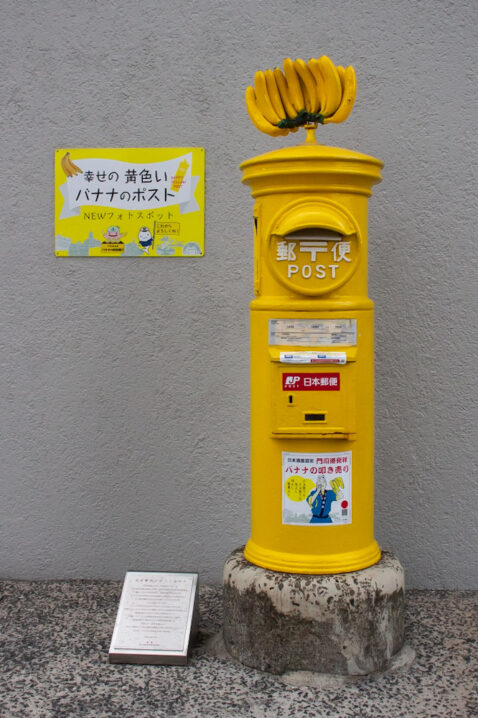
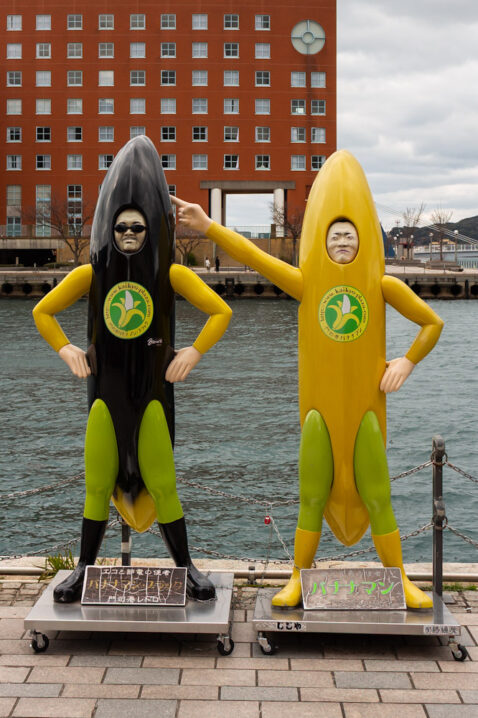
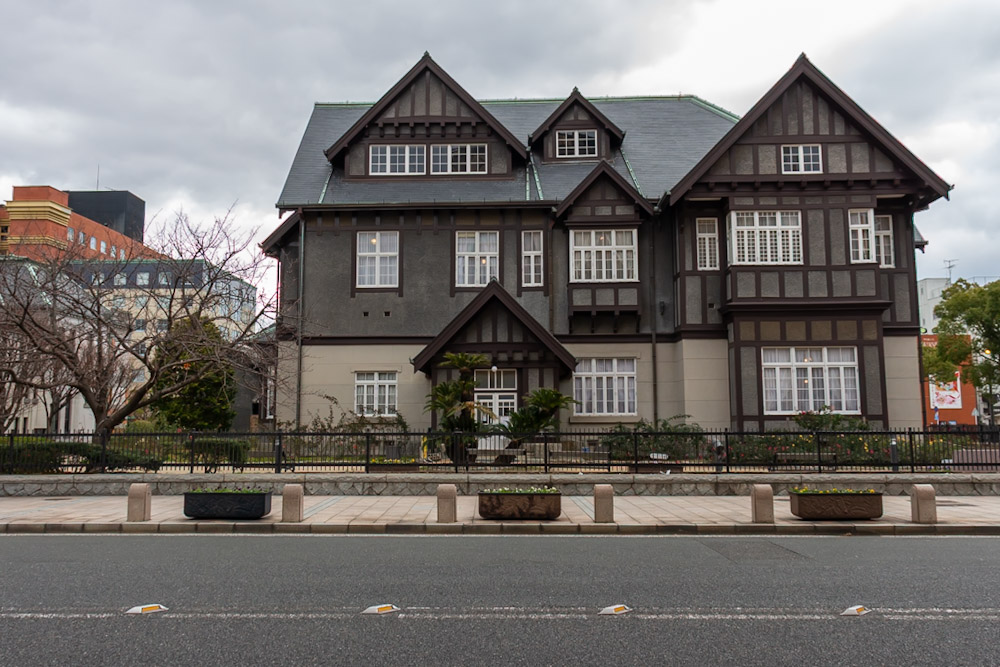
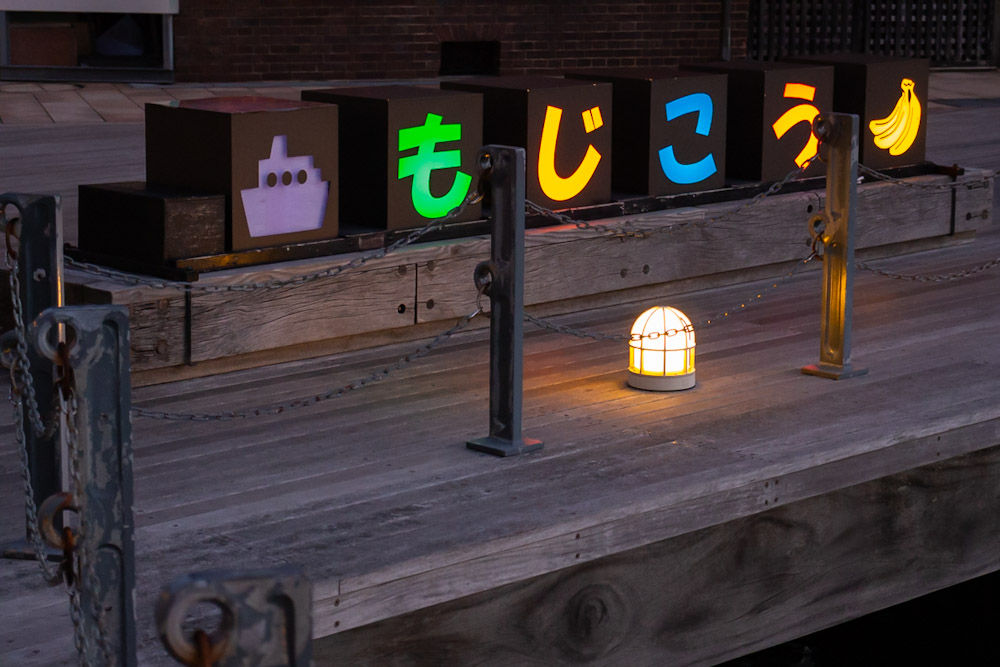
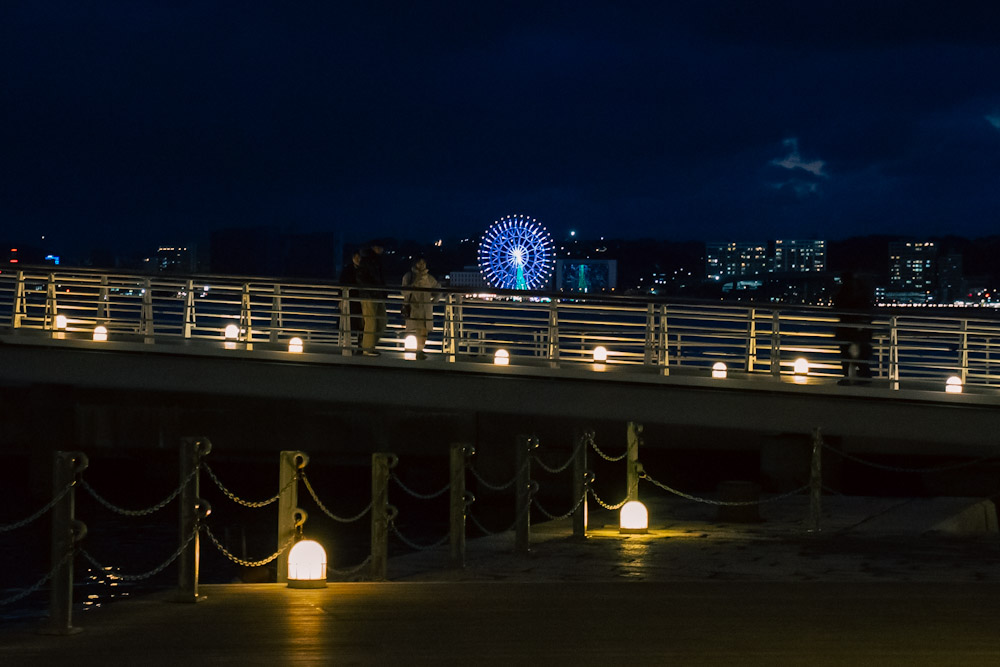
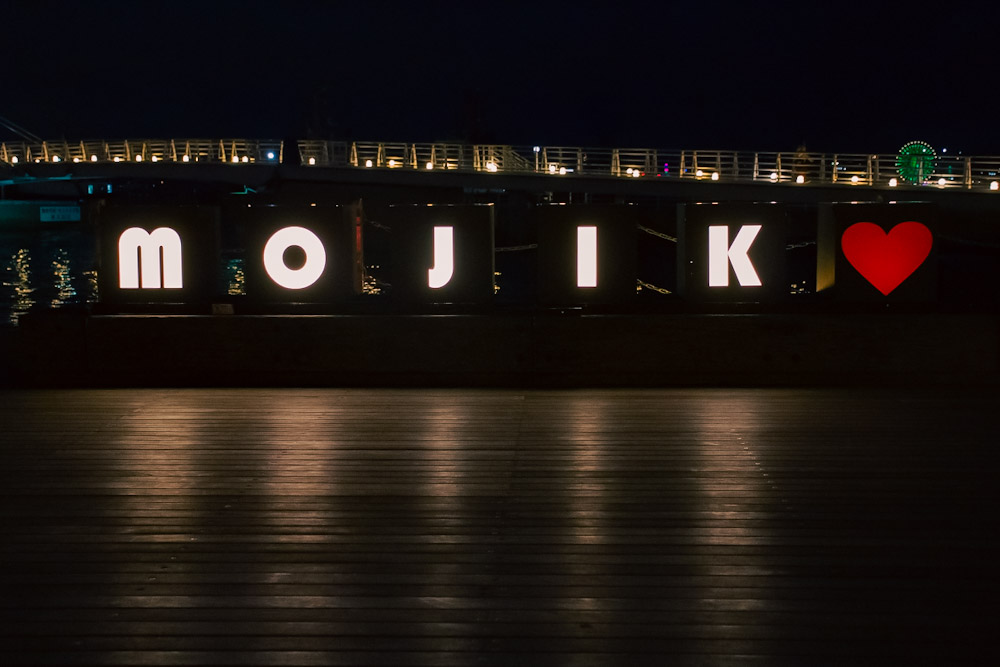
Visit Mojiko
From JR Kokura Station in Kitakyushu, take the Sub Rapid Mojiko on the Kagoshima Line to Mojiko Station. It takes about 15 minutes and costs 340円 each way.
If you’re coming from Shimonoseki, first take the Local Kokura on the Sanyo Line from JR Shimonoseki Station to Moji Station (a different stop from Mojiko), and then change to the Sub Rapid Mojiko from there. It takes about 20 min total and costs 340円 each way.
You can also get to Mojiko from Shimonoseki via the Kanmon Tunnel, which is a pedestrian walkway that goes under the Kanmon Strait. It’s a free 780-m (0.5-mi) walk (or 20円 with a bicycle or moped).
